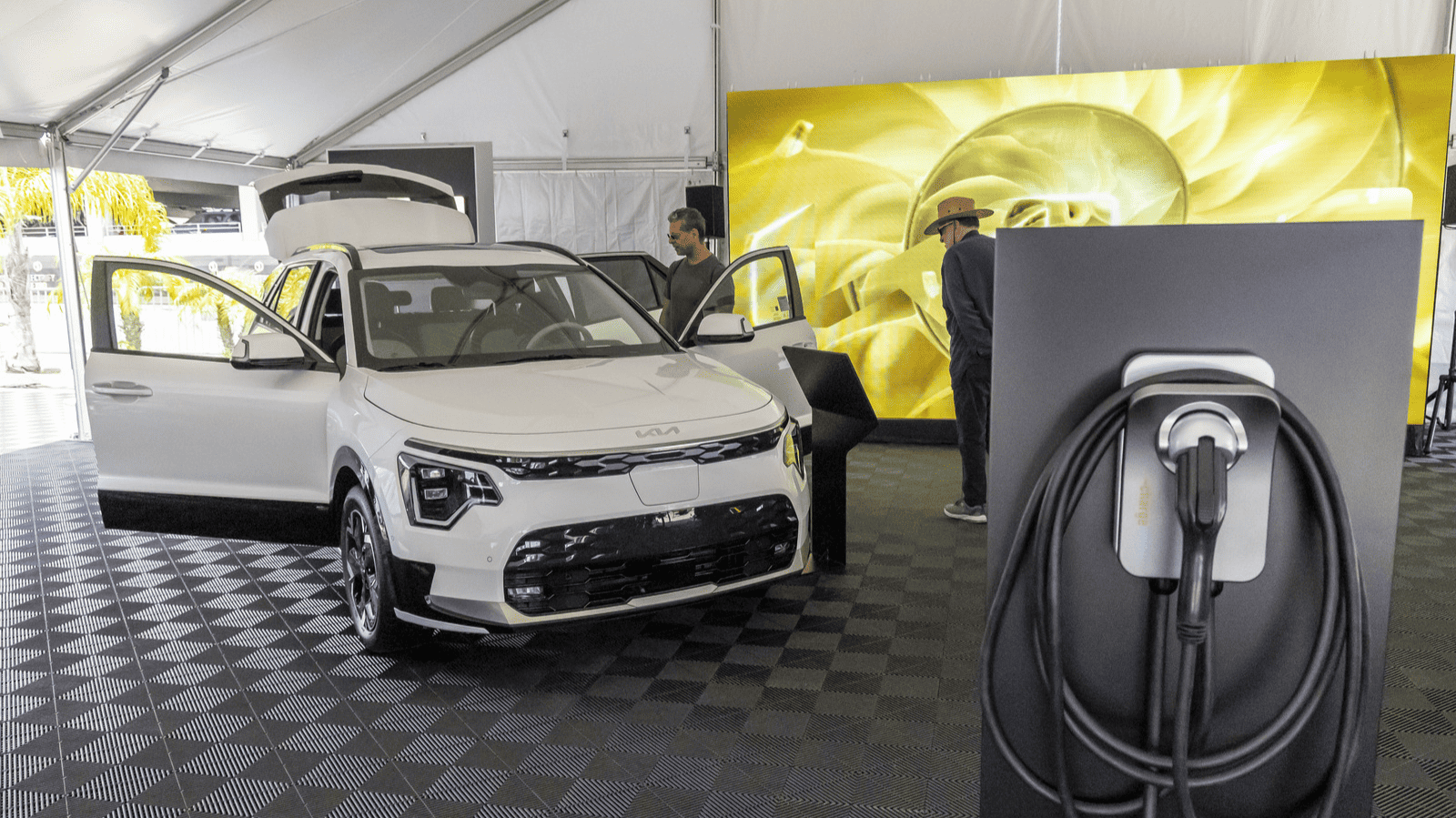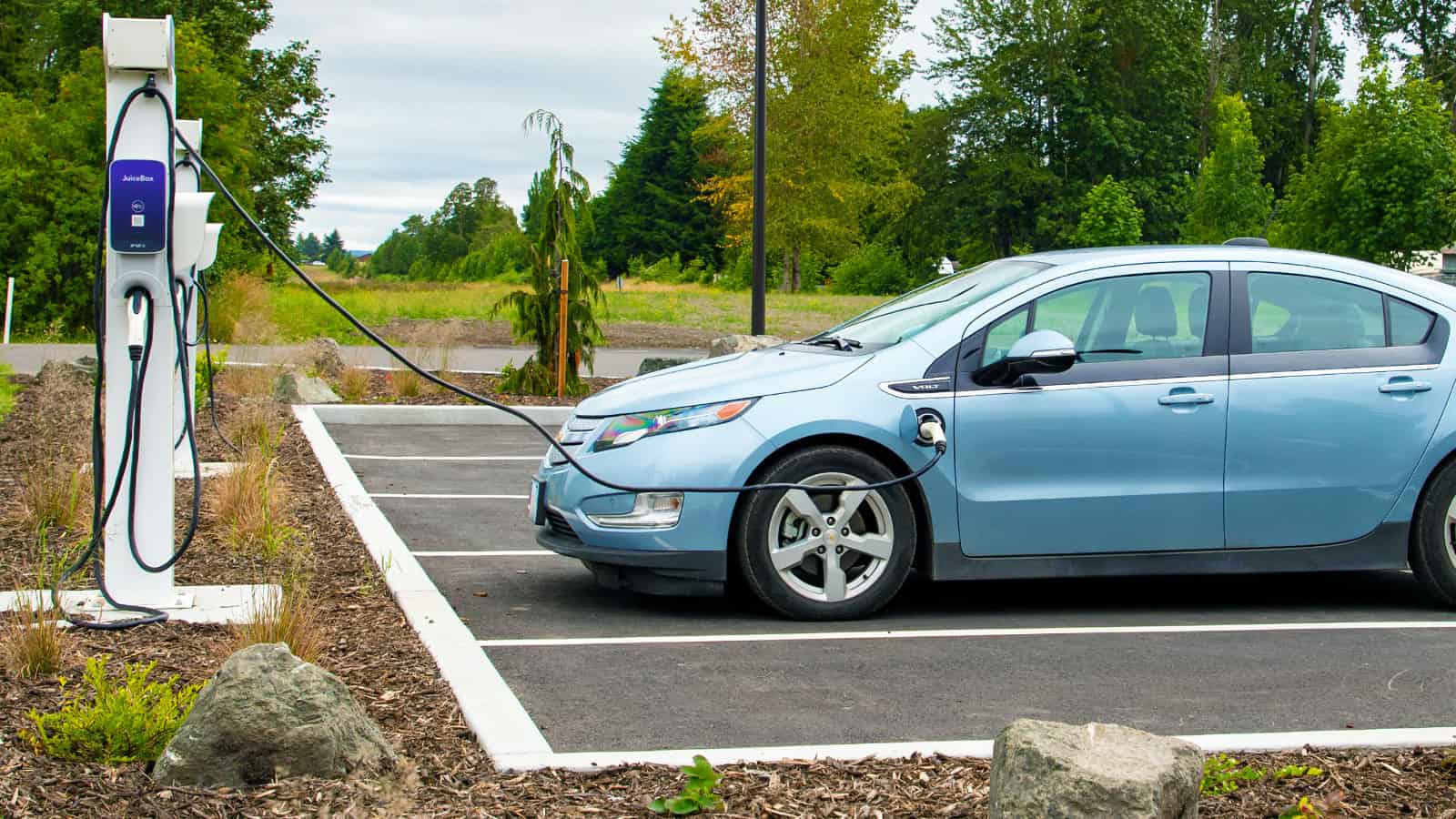- Electric vehicles have fewer moving parts, so they need less maintenance than gas-powered cars.
- EV battery costs continue to decline.
- EV dealerships have technicians who can repair and maintain the EVs they sell.
- Electric vehicles never need oil changes because they don’t use oil.
As drivers look for excuses to keep their gas-powered vehicles, they often believe EVs require more maintenance. In reality, fully-electric vehicles have fewer moving parts, so they require less maintenance than a vehicle with an internal-combustion engine (ICE). Let’s bust a few myths regarding electric vehicles and special (expensive) maintenance.
Myth #1: EV owners will have to replace the lithium-ion battery
Sadly, this myth continues to steer shoppers away from electric vehicles. Yes, EV batteries will need to be replaced, but warranties protect EV owners, and the associated costs continue to drop. In reality, EV lithium-ion batteries require little to no maintenance, especially compared to gas-powered engine components.
The federal government requires EV manufacturers to cover large batteries with a minimum 8-year/100,000-mile warranty. Many manufacturers increase the warranty to 10 years and 100,000 miles and some boost it to 150,000 miles.
The Department of Energy estimates the replacement cost for an EV battery averages $153 per kWh. Bloomberg reports that some EV batteries cost less than $100 per kWh. The price of a lithium-ion battery pack has dropped dramatically over the past decade, and experts predict the cost will continue to fall.
Batteries will eventually wear out, but the cost to replace them is often less than or equal to the price of replacing major components in ICE vehicles. Consider the costs of these ICE components:
- Transmissions: $3,500 and up
- Engine: $7000 and up
- Catalytic converter: $1500 and up
- Fuel pump: $700 and up
- Timing belt: $500 and up
- Camshaft: $1500 and up
The most expensive component in any EV is the lithium-ion battery, and the National Renewable Energy Laboratory research shows that today’s batteries should last between 12 to 15 years. Consider the cost to maintain an ICE vehicle during that same period.
Myth #2: Electric vehicles need more components maintained than gas-powered cars
While electric vehicles have some fluids, they don’t have oil, so they never need routine oil changes. Electric vehicles still need tire rotations, windshield wiper blades, and brake service. They occasionally need computer updates, but many manufacturers are providing this service over the air, requiring fewer service visits.
Because electric vehicles use regenerative braking with one-pedal driving, EV brakes last longer than brakes in gas-powered cars.
Myth #3: No one knows how to maintain EVs.
If a dealership sells electric vehicles, they have service techs who can maintain them. EVs have safety technology, brakes, filters, HVAC systems, brake lights, and headlights – and these all function like those in an ICE vehicle. If drivers have issues with electric motor components or charging systems, dealership technicians have the knowledge and skills to make repairs.
Because electric vehicles have fewer moving parts than gas-powered vehicles, they have fewer maintenance needs. Most electric vehicles require little to no maintenance for the electric motor(s), battery, and related components. EVs need wear-and-tear parts replaced, but those are items like tires, brakes, and wiper blades – nothing special, and nothing outrageously expensive.
Myth #4: EVs need more frequent service visits than gas-powered cars.
Most EV manufacturers recommend two service visits per year – usually between 10,000 and 15,000 miles. During these visits, technicians rotate the tires, check the filters and wipers, and inspect the brakes. Some EVs have coolant, so they need inspections and occasional coolant flushes. On the flip side, many ICE vehicles need seasonal service visits, and each visit requires an expensive oil change.
The Truth About Maintaining Electric Vehicles
In reality, electric vehicles require less maintenance than gas-powered vehicles. While EVs have higher sticker prices than the typical ICE vehicle, EVs have lower maintenance costs because they have fewer parts. EVs manufactured in the US have those attractive money-saving tax credits, which lower the price by up to $7,500.

SOURCES | FEATURE IMAGE: DEPARTMENT OF ENERGY, BLOOMBERGNEF, NATIONAL RENEWABLE ENERGY LABORATORY | ELECTRIFY EXPO
FTC: We use income-earning auto affiliate links. Learn more.






















One Response